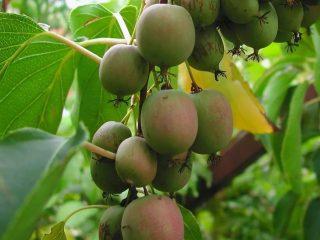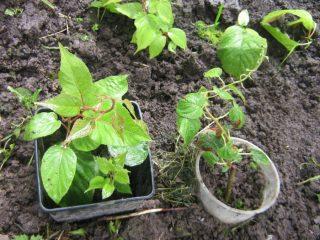Content
Actinidia is a fast-growing vine whose fruits can be eaten. It is closely related to kiwi, but can grow in cold regions. This is why Russian gardeners value culture. In order to harvest in a timely manner, it is important to know the difference between male and female actinidia. How to do this should be discussed in detail.
Why determine the sex of a flower?
Despite its high winter hardiness, actinidia is not so popular in this country. Nevertheless, experts note positive growth dynamics. The birthplace of the culture is southeast Asia, whose residents will never be able to part with a tasty plant.
Most varieties are unpretentious, resistant to climate change and weather conditions, and have a powerful immune system. Growing actinidia is an extremely easy process, since insects and diseases bypass the crop. In summer, it produces fruits that have a sweet and sour taste, similar to its close relative, the kiwi fruit.
Ascorbic acid is also present, which adds sourness. Scientists have identified a significant content of potassium and calcium, which are necessary for the normal functioning of the human body.

Fruit formation occurs by the fourth year
To get a tasty fruit, you need to inquire about the gender of the plant: both female and male specimens should grow on the site. The absence of one or another becomes the reason why gardeners cannot wait for the berries to ripen. For one male actinidia, up to five female bushes are needed.
Differences between male and female actinidia
There are gender differences between male and female actinidia, there are even several of them. However, they can be detected mainly at the time of flowering, since sexual dimorphism is weakly expressed.
Flowers

Both male and female actinidia produce flowers
Male specimens are characterized by long, small-diameter stamens. They are located in the middle part of the flower. The stamens end with pollen collected in a small ball.
Another difference is the ovary, or rather the lack thereof. Therefore, the inflorescences fall to the ground very quickly.
Female actinidia have a green ovary in the middle part of the flower.

Stamens are present, but they are somewhat shorter and are not located directly in the center, but are scattered
Leaf color
Another characteristic difference is the color of the plates. “Girls” have a green tint, while the color of “boys” is constantly changing: at first the bushes are green, with the arrival of summer they are white, and in autumn they are red.

There are bisexual varieties that can self-pollinate
Botanical research shows that the presence of both male and female plants leads to increased yield.
What to do if the plant is unisexual
In rare cases, actinidia may not have ovaries or stamens. This is the difference between unisexual specimens and bisexual ones. The ability to bear fruit can be restored in two ways:
- graft to the opposite sex;
- transplant the male bush closer to the female one.
Conclusion
The difference between male and female actinidia lies in the size of the stamens, their location and the presence of an ovary on the flower. In some cases, the difference between plants can be identified by the color of the foliage. Changes in color are characteristic of “boys”, while “girls” always remain green.








